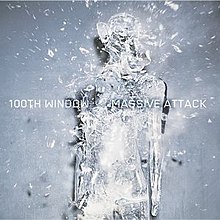100th Window
| 100th Window | ||||
|---|---|---|---|---|
 |
||||
| Studio album by Massive Attack | ||||
| Released | 10 February 2003 | |||
| Recorded | 2001–2002, Sony Studios | |||
| Genre | Trip hop, electronica, minimal techno | |||
| Length | 73:52 | |||
| Label | Virgin Records | |||
| Producer | Robert Del Naja, Neil Davidge | |||
| Massive Attack chronology | ||||
|
||||
| Singles from 100th Window | ||||
|
||||
| Professional ratings | |
|---|---|
| Aggregate scores | |
| Source | Rating |
| Metacritic | 75/100 |
| Review scores | |
| Source | Rating |
| Allmusic | |
| IGN | 8.8/10 |
| Mojo | |
| Pitchfork Media | 5.1/10 |
| Robert Christgau | |
| Rolling Stone | |
| Spin | |
| Stylus Magazine | B |
| Uncut | |
| Vibe | |
100th Window is the fourth studio album from the Bristol-based trip-hop group Massive Attack. Of the band's original core trio, the album only features Robert Del Naja. Andrew Vowles departed shortly after the release of Mezzanine, and Grant Marshall refused to participate in the making of the record.
Released in February 2003, 100th Window was written and produced by Del Naja and Neil Davidge, and features vocals from Horace Andy, Sinéad O'Connor and Damon Albarn (performing as 2D). It is the first album by the band that made no use of samples, and contains none of the jazz or jazz fusion stylings of the Blue Lines or Protection recordings.
Work on the album started in early 2000 at the Christchurch Studios in Clifton, Bristol. Massive Attack recruited Lupine Howl (a band made up of ex-members of Spiritualized) for the new album. In a November 2001 interview, Lupine Howl's lead singer Sean Cook described the sessions as "very experimental ... that essentially consisted of kinda minimal loops and noises that were fed to our head phones from the computer up in the control room. Then we would have this sort of extended jam session playing along to them and they would do various things to do the loops. Sometimes they would drop out the loop, sometimes they would start processing it with effects and delays and stuff like that, to try and make it change in various ways and see what that would do in terms of our playing. They also had a strobe light in the live room, which they controlled from the control room. They would kind of put that on and speed it up to dictate the intensity and try to affect the way we played with the lighting. It was a really good laugh; we got some good stuff. I mean, hours and hours of stuff, which they have taken back and cut up and arranged and done their things to."
...
Wikipedia
